Create a waterfall chart in Office 2016
A waterfall chart shows a running total as values are added or subtracted. It's useful for understanding how an initial value (for example, net income) is affected by a series of positive and negative values.
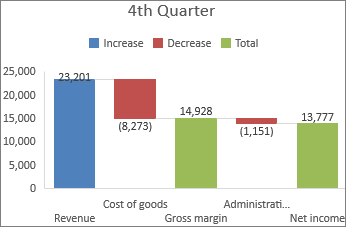
Create a waterfall chart
-
Select your data.
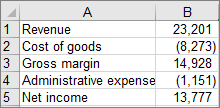 Data used to create the example waterfall chart above
Data used to create the example waterfall chart above -
Click Insert > Insert Waterfall or Stock chart > Waterfall.
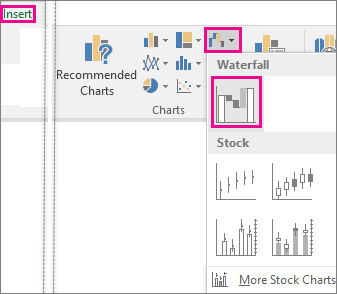
You can also use the All Charts tab in Recommended Charts to create a waterfall chart.

Start subtotals or totals from the horizontal axis
If your data includes values that are considered Subtotals or Totals, such as Net Income, you can set those values so they start on the horizontal axis at zero and don't "float".-
Double-click a data point to open the Format Data Point task pane, and check the Set as total box.
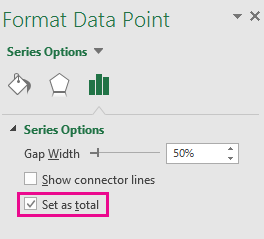
Note If you single-click the column, you'll select the data series and not the data point.
To make the column "float" again, uncheck the Set as total box.
Tip You can also set totals by right-clicking on a data point and picking Set as Total from the shortcut menu.
Show or hide connector lines
Connector lines connect the end of each column to the beginning of the next column, helping show the flow of the data in the chart.-
To hide the connector lines, right-click a data series to open the Format Data Series task pane, and uncheck the Show connector lines box.
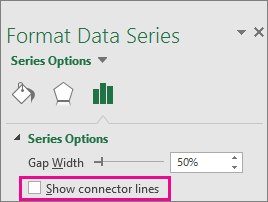
To show the lines again, check the Show connector lines box.
To read more about the waterfall chart and its uses, see this blog post on the waterfall chart by the Excel team. You may also be interested learning more about the other new chart types described in this blog post.


Comments
Post a Comment